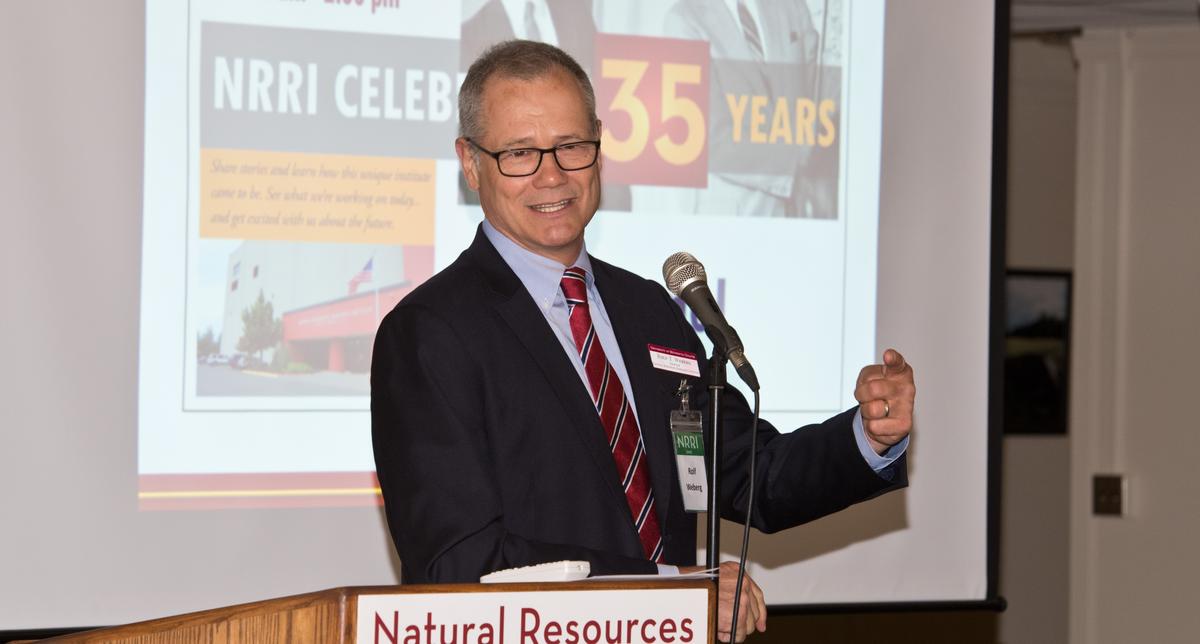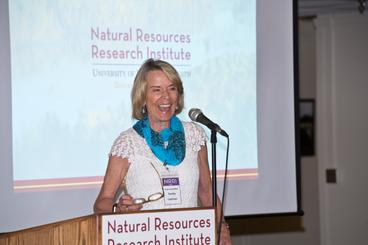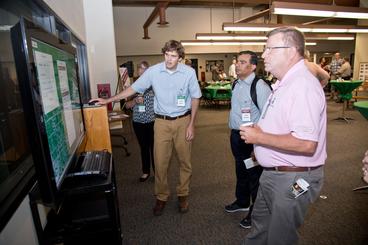If just one word was allowed to describe NRRI, it would be “collaborative.” NRRI researchers reach out to the talents in the University system, across the state to industry and agency partners, and further still to innovators around the globe.
And that spirit is summed up in a favorite quote of Minnesota Governor Rudy Perpich (1976-79 & 1983-91): “None of us is as smart as all of us.”
On August 10, NRRI celebrated the legislative and community collaboration that formed the institute in 1983. A gathering of legislators, industry, agency and university stakeholders viewed NRRI’s newly remodeled lobby with a timeline highlighting examples of projects over the decades.
Representative Mary Murphy was one of the original legislators who promoted the establishment of the institute. She shared stories of growing up in the neighborhood and witnessing the struggles of the economy of the 1980s that NRRI was formed to address.
NRRI’s first permanent director, Michael Lalich, spoke about establishing the institute structure and mission and highlighted accomplishments of the staff over his 30 years at the helm.
“I was asked to highlight my favorite success stories, but that’s so hard to do,” he said. “There are just so many.” Among others, Lalich mentioned early assistance to Duluth-based Epicurean and Loll Designs, and Northern Contours of Fergus Falls, which continue to grow and create jobs. He added that taconite industry R&D in Coleraine has also been a boon to the Iron Range over many years.
Lunch followed with comments by UMD Vice Chancellor Fernando Delgado, Rep. Sandy Layman, Brian Hiti representing the Dept. of Iron Range Resources & Rehabilitation, Duluth Mayor Emily Larson and NRRI Executive Director Rolf Weberg. To honor the memory of the two men whose vision and effort propelled the establishment of NRRI – Judge Gerald Heaney and Gov. Perpich – Weberg dedicated the Duluth site’s third floor as the Heaney-Perpich Collaboratorium.
“These two men exemplify the spirit of this new flexible and creative space,” said Weberg. “Our researchers will use it to explore opportunities and solutions with our stakeholders and partners to continue providing innovations for the challenges of our state and beyond.”
Research staff highlighted their excitement for the future in a video [Full 3.5 minute version], and current research projects showcased how NRRI reduces waste, creates opportunities and assesses strategic resources.
“It’s exciting to build a future on the solid foundation of the past 35 years,” added Weberg. “Our comprehensive and collaborative approach makes NRRI nationally unique. With continued support, we’ll help prepare Minnesota for the economy of the future.”



